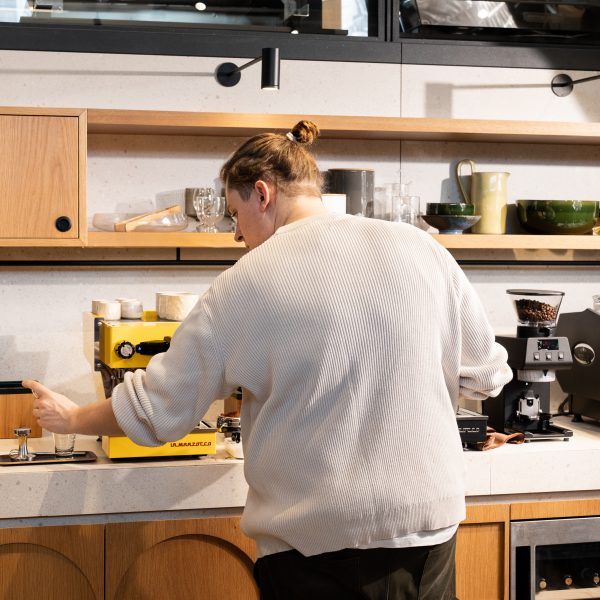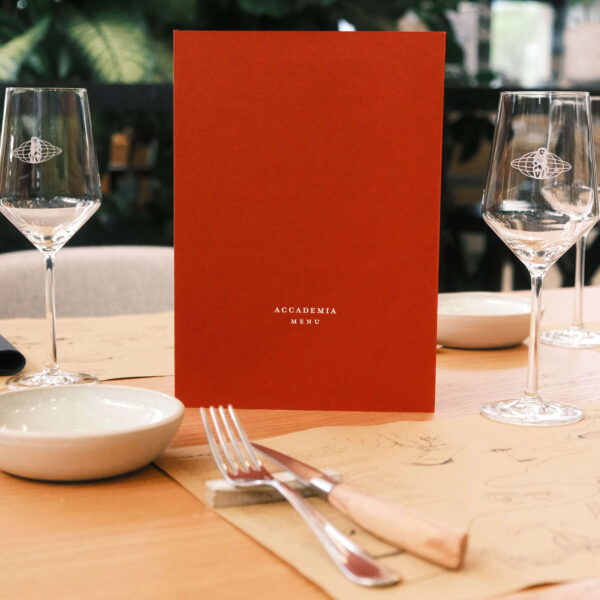Blog
It was 2004, and I was working in Milan with a nice office, a driver, and a secretary. However, my family and my life were in Florence, and I was getting tired of working in so-called ‘big’ companies. Through a friend, I found out that La Marzocco was looking for someone to take care of all the administrative and personnel aspects. I had a couple of interviews, strictly at lunchtime, with the then CEO Ron Cook. After thinking about it for a while, I convinced myself that it was worth trying this new adventure.
Moving from Milan to Pian di San Bartolo was a bit of a shock (said with much affection, of course). The first days were quite complicated: I knew nothing about coffee, let alone coffee machines. I had one coffee a day just to help me wake up in the morning. And it was a completely different world: we were seventeen in total, about ten in the workshop, and the rest in the offices.
The historical workers, who are still almost all with us, had all joined as young people, thanks to a personal connection with Piero. It was more than a family environment. One was the son of a La Marzocco worker who unfortunately passed away young, one was the nephew of Luciano, the historic manager of the “Tremoto” restaurant in Pian di San Bartolo, and one was the son of family friends of the Bambi family. Only Lorenzo Carcasci, the welder, had been sought and hired based on the skills he already had. I came from much more complex and different realities: Piaggio, Fiat, Pirelli. In Pian di San Bartolo, there was also Ron Cook, the CEO, who spoke a funny Anglo-Italian slang. And above all, there were Piero Bambi, who was still in good shape and acted a bit like a father figure, making and breaking things.
The legendary Pina had joined the company at 16 and only left when she retired. She handled a bit of everything: purchases, personnel, she was the factotum of the company and Piero’s trusted person. Ettore Toscani (who was the husband of Piero’s cousin) handled accounting and administration and was a real old-style gentleman: white hair, elastic on the shirt sleeve, managing the administrative and accounting part with a pencil and notepad. And the legendary Olivetti, who covered everything every evening with a kind of plastic bag to prevent it from getting damaged. Then there were Roberto, who managed the production part, and Guido and Lorenzo, who handled sales and marketing.
After just a week, I found myself on a plane to Seattle to meet Kent, Joe, John, and Tim, the American partners. Accustomed to large multinationals and many formalities, always with “doctors” and “engineers” in dark suits, I found myself on the other side of the world in a series of informal meetings with people in jeans and T-shirts.
At that time, we produced about 1200-1300 machines a year. More than half of those machines went to the United States. We were closely tied to a single market, and if that market had reduced its orders, it would have put us in serious difficulty. Every Monday morning, we had a meeting to check the status of the order portfolio, and each new order was celebrated as an exceptional event.
There were also sacred rituals. Every morning around eight and a half, Piero made coffee for everyone, and woe to those who were not there or had something to say about the quality of the coffee. Which was always the same, the one Piero liked, so you could only drink that. It was a truly special atmosphere, very beautiful, very pleasant; you really felt part of a family.
To move the company forward, we had to grow in terms of the number of customers and revenue. New products, new markets, new customers, new organization, hiring people to help us with all this. I remember the first to arrive were Barbara (Galea. Customer Care Manager) and Ettore (Scagliola. After Sales Specialist), and soon after came Diego (Albano, Account Receivable Coordinator) and Elena (Ciuffi. Purchasing Manager). They were the first reinforcements to try to build an organization that basically did not exist. We started structuring the company to be able to support any future growth.
Certainly, one of the most important figures in my life at La Marzocco was Piero, the historical figure of the company. And with Piero, a special relationship was created. I always addressed Piero formally, we laughed and joked, but we used the formal address out of respect. I think a relationship of extreme trust and esteem, I would dare to say affectionate, was created between me and him, and between him and other people in the company. He was a bit like our dad, our teacher, our tutor in many ways. Beyond his somewhat gruff impact, he was an exquisite person. Extremely clear-minded and intelligent, very generous; there was a lot to learn from him. He was truly a reference figure that I often think about, even today. The reason to come to the company and always do things to the best of our ability. A person we all cared a lot about, and I believe he felt the same way about us. I often found him in front of the office door: ‘Do you have five minutes?’ When this happened, I already knew that something was bothering him. And I knew it would be two hours, not five minutes. When occasionally I’m told that I’m “becoming like Piero,” I take it as a great compliment. I think his presence was necessary. We must be good at keeping his teachings always present.
Then, in 2009, when the company tried to change direction, we tried to combine the positive aspects of the previous management with our new vision of the company. Today, we are no longer such a small family, and the group has become extremely complex, but our principles have always remained the same.
First of all, we always try to understand if someone coming to help us shares our vision and philosophy. Because specific technical skills can be improved, we must be able to understand if that person can integrate into our work group, into our environment, if they share our ideas and our way of living the company.
Today, the group has about 800 people, and over the years, we are convinced that we have included very talented people who want to do things, who want to share a common path and philosophy. Seeing a group of people working in harmony, with this desire to be together, is very beautiful. I hope to stay in the company for many more years, but I realize that we need to start thinking about what La Marzocco will be like in the future. One of our main tasks now is to build and ensure the future generation of La Marzocco. Everything we are doing is aimed at this perspective. Creating what will be the future of La Marzocco because we like to think that beyond us and our presence, the company will continue to be even stronger and better than it is now.




